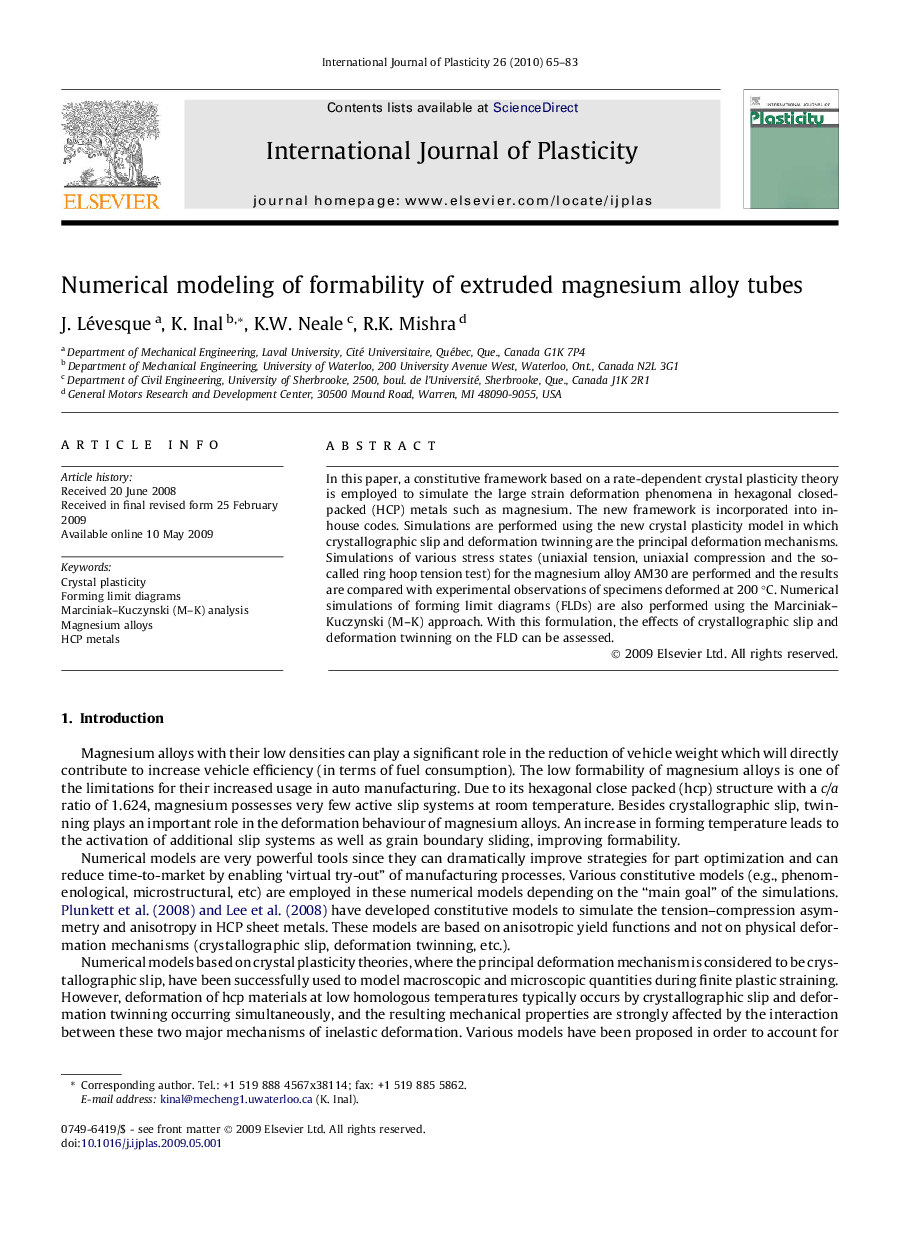| Article ID | Journal | Published Year | Pages | File Type |
|---|---|---|---|---|
| 786330 | International Journal of Plasticity | 2010 | 19 Pages |
In this paper, a constitutive framework based on a rate-dependent crystal plasticity theory is employed to simulate the large strain deformation phenomena in hexagonal closed-packed (HCP) metals such as magnesium. The new framework is incorporated into in-house codes. Simulations are performed using the new crystal plasticity model in which crystallographic slip and deformation twinning are the principal deformation mechanisms. Simulations of various stress states (uniaxial tension, uniaxial compression and the so-called ring hoop tension test) for the magnesium alloy AM30 are performed and the results are compared with experimental observations of specimens deformed at 200 °C. Numerical simulations of forming limit diagrams (FLDs) are also performed using the Marciniak–Kuczynski (M–K) approach. With this formulation, the effects of crystallographic slip and deformation twinning on the FLD can be assessed.
